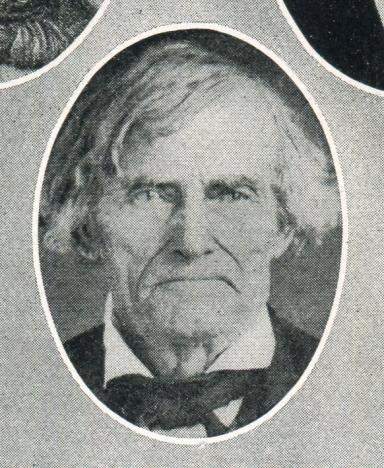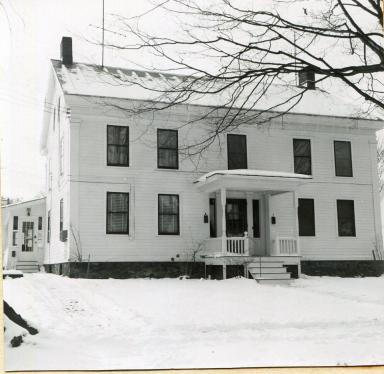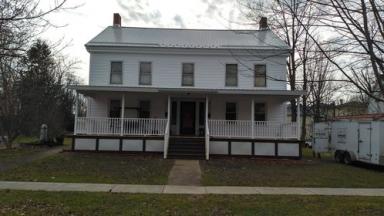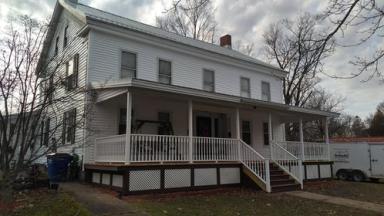If you find errors OR have additional information about this site, please send a message to contact@waynehistorians.org.
Melvin "Black" House
| Historic Site #: | 15-041 (Exists) Type: D10 | Town: | Wolcott | ||
| Site Name: | Melvin "Black" House | GPS Coordinates: | 43.223329, -76.817353 | ||
| Address: | Smith Street, Wolcott, NY | ||||
| Description: | |||||
| In 1806, one of Wolcott's first settlers, Jonathan Melvin, Sr. purchased 500 acres of wilderness at what would eventually become the village of Wolcott. Mr. Melvin built a gristmill and sawmill at the falls of what is now known as Wolcott Creek in the village. In 1812, Melvin built a frame house for his family and painted it black. He said the color reflected his personality. Apparently, this was not a fair assessment of himself, as he was known to be a very generous man. He donated land for a school and a church, and he was known to be very hospitable. 12/15/2021 Facebook Post about the Melvins from Phelps | |||||
 |
 |
| Jonathan Melvin, Sr. (Wolcott Historical Society) | Melvin |
 |
 |
| Photo Courtesy Jeff DeBadts | Photo Courtesy Jeff DeBadts |
| Historic narrative: | |||||
| From The Architectural History of Wolcott a Master's Thesis for Syracuse University by George Pitluga, Jr. (1959). "In the fall of 1812, Mr. Jonathan Melvin erected a large two story frame house on the corner of West Main and Wright Streets, approximately where the present Mower House now stands. The Chronicles of Old Wolcott claims that this building was erected on the southwest corner of Wright and West Main streets, but this seem unlikely since the F. S. Johnson house was erected on that corner in 1874, and the house erected by Jonathan Melvin was not moved from its present site until 1878, four years later." "All that has been recorded of the initial appearance of this house is that 'it was a very substantial structure and his [Melvin's] peculiar fancy was in painting. He painted the house black . . . as black as lamp black and oil could make it.' 1 His reason for painting his house this unusual color was that he 'liked to see things correspond; if my character is black, I paint my house so.' 2 It is for this reason that most accounts refer to his house as the Black House." "Because of the succession of ownership and several renovations, alterations, and additions, it is difficult to determine how much of the original appearance, as Melvin constructed it, is present in the house today. It would seem logical to assume that we can attribute to Jonathan Melvin the basic two story rectangular mass with a gabled roof, the organization of interior spaces, and the symmetrical fenestration of the exterior, all of which hark back to a Colonial Georgian tradition, firmly established in New England since 1700." Footnotes: 1. Brown, Edward. Chronicles of Old Wolcott. Wolcott. Lake Shore News, 1954. 2. Ibid. p.9. | |||||
